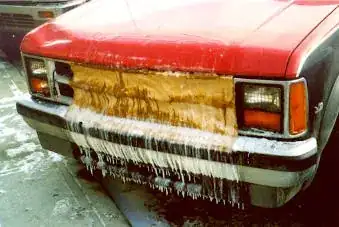In some countries it is quite popular to cover up the front grill in winter (especially on diesel engined cars). As I understand the intention is to inhibit airflow to the radiator, but why would you do that if coolant flow to the radiator is allowed by the thermostat only when operating temperature is reached? As far as I can tell it all it could do is cause harm, such as overheating and lost intercooler effectiveness.
I've actually seen special plastic or fabric covers sold for specific models, so it must have SOME kind of use:
So what's the catch, when do you need one if your cooling system is in order? I've heard of people saying that sometimes the interior heater is so effective that the engine is having trouble keeping the temperature up, but how would covering up the non-functioning radiator work? Is cold air hitting the outer shell enough?

